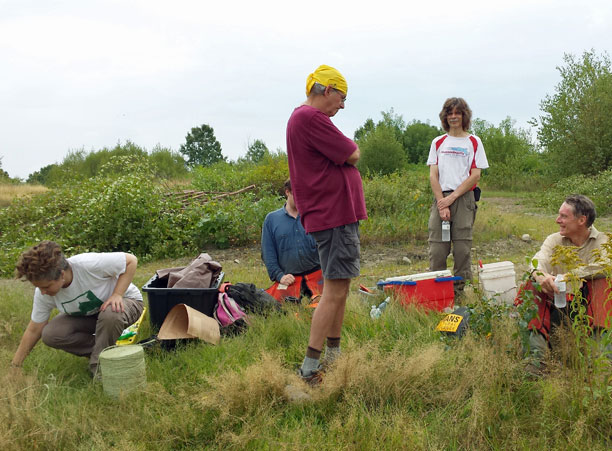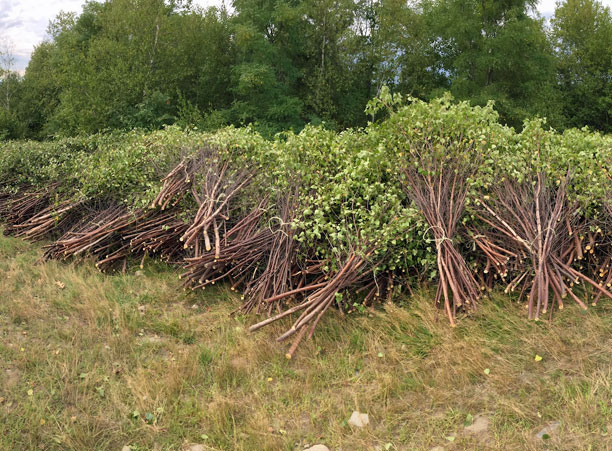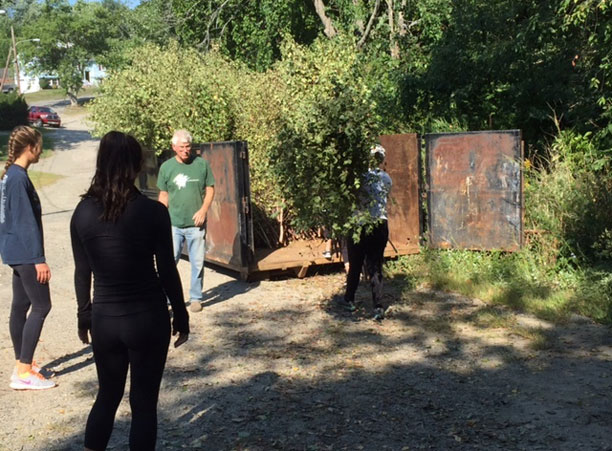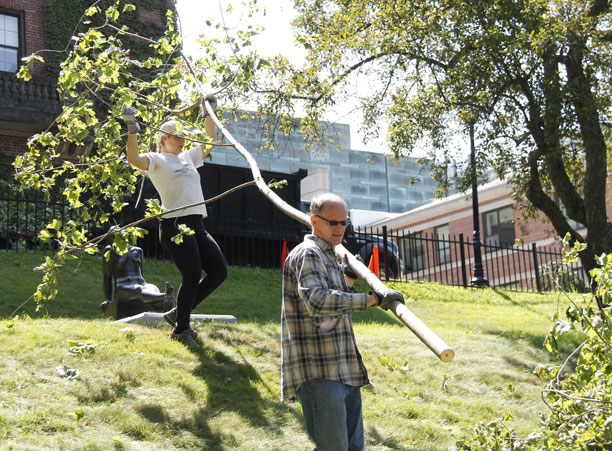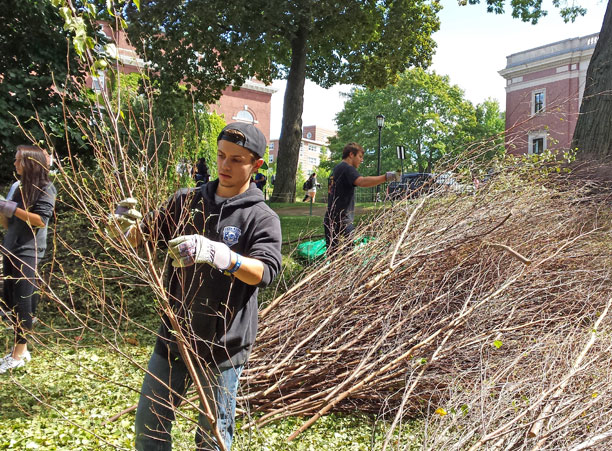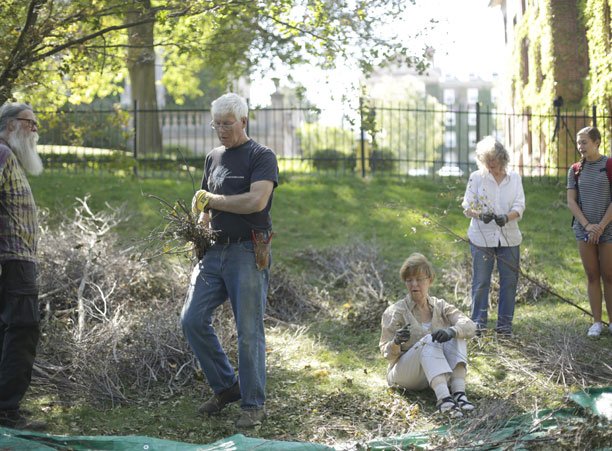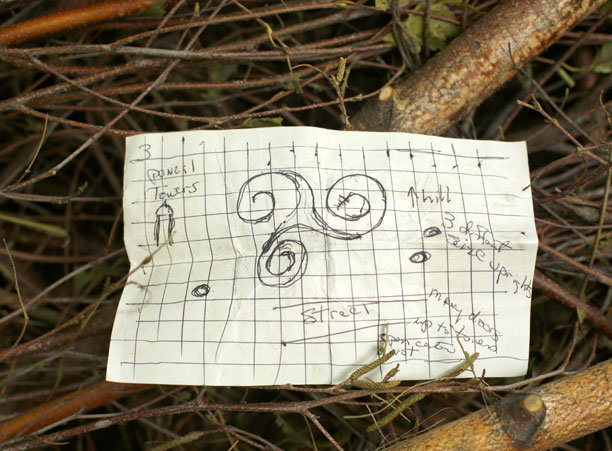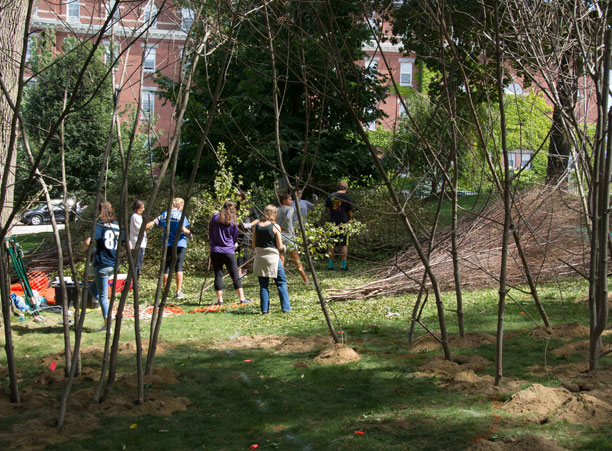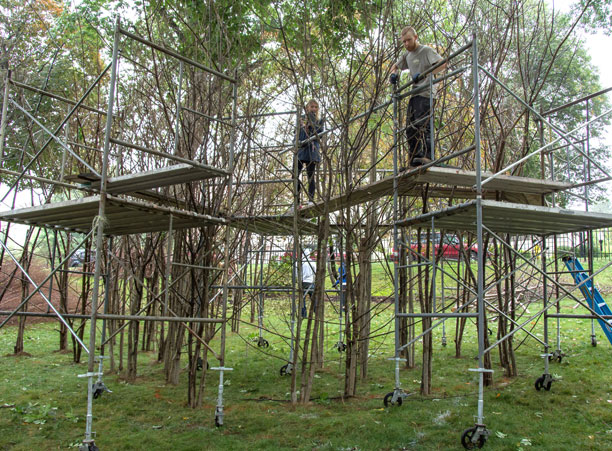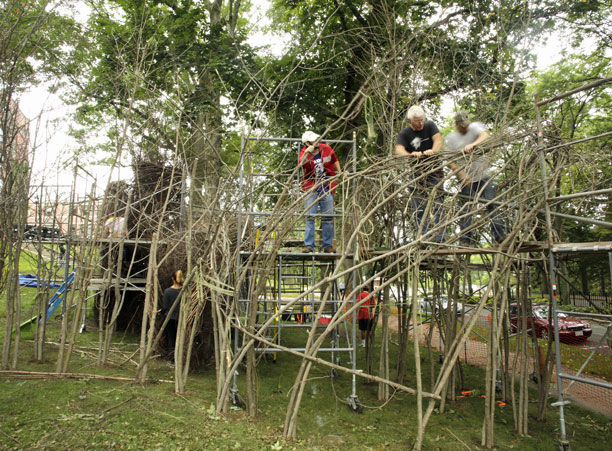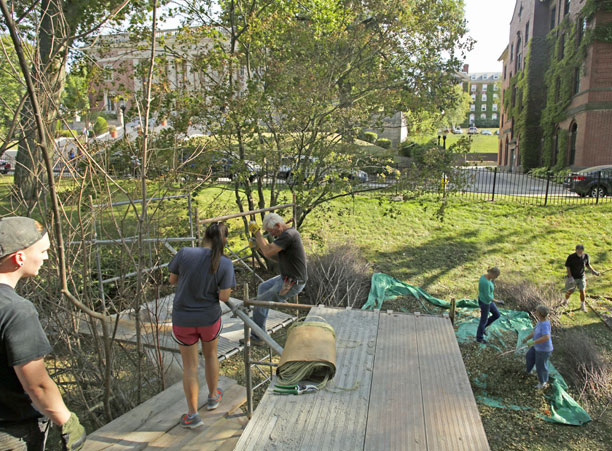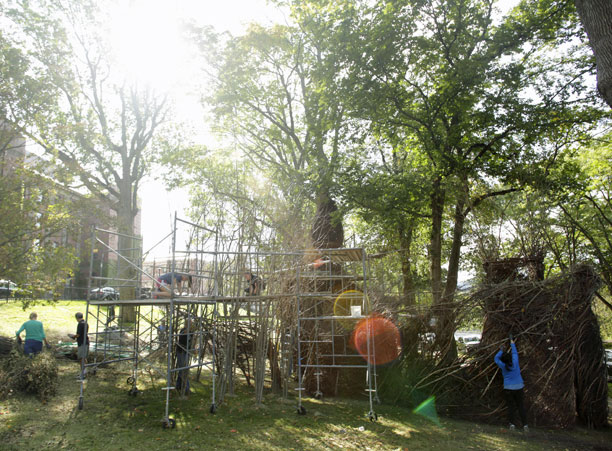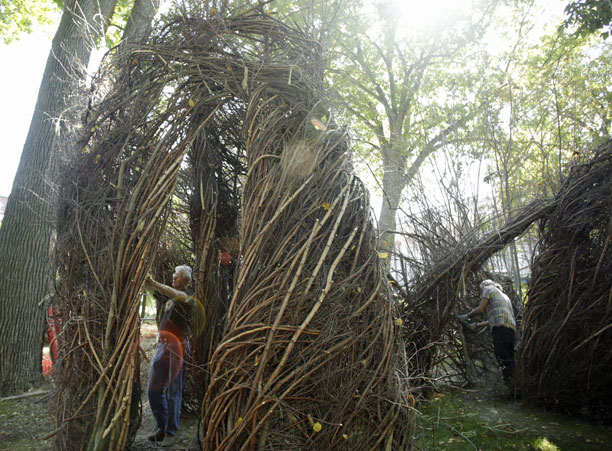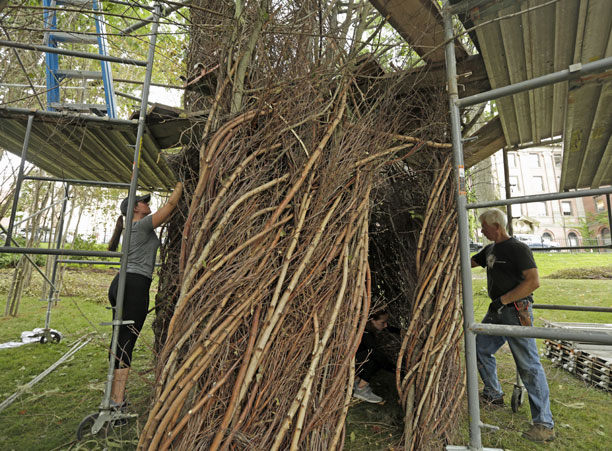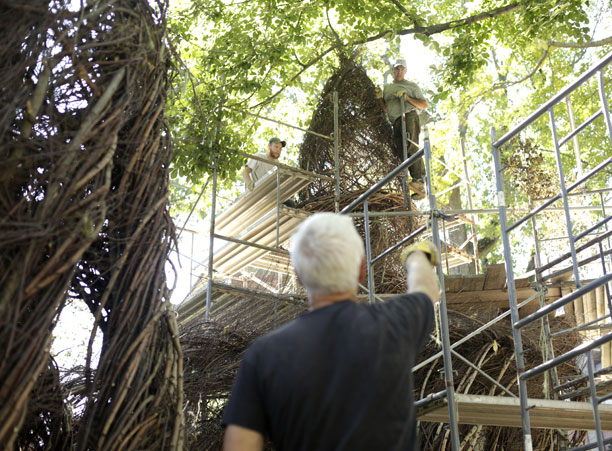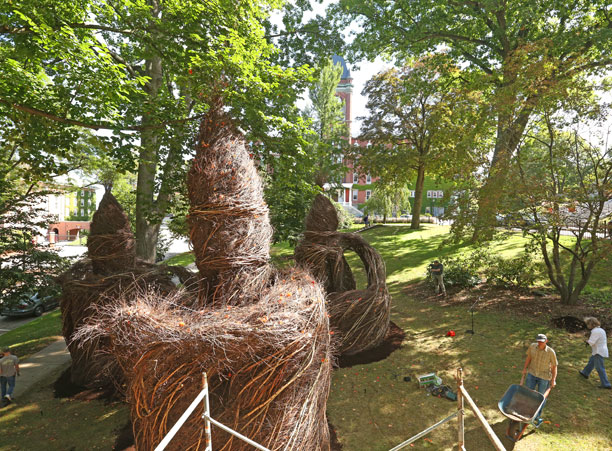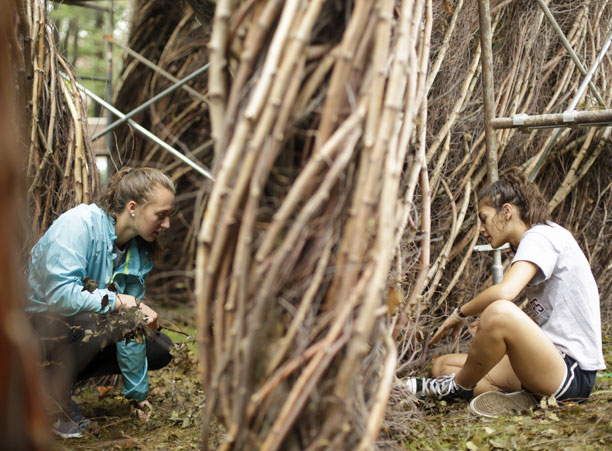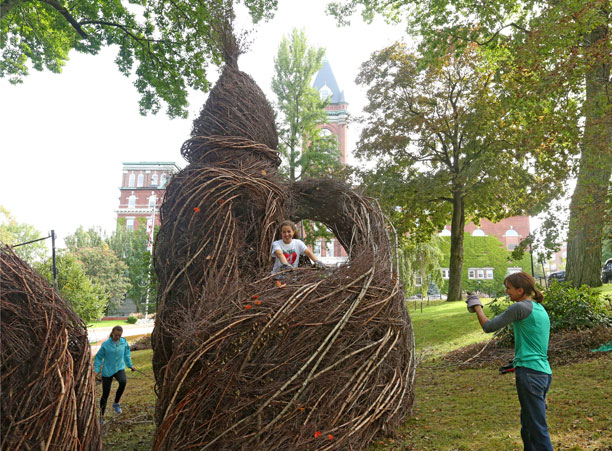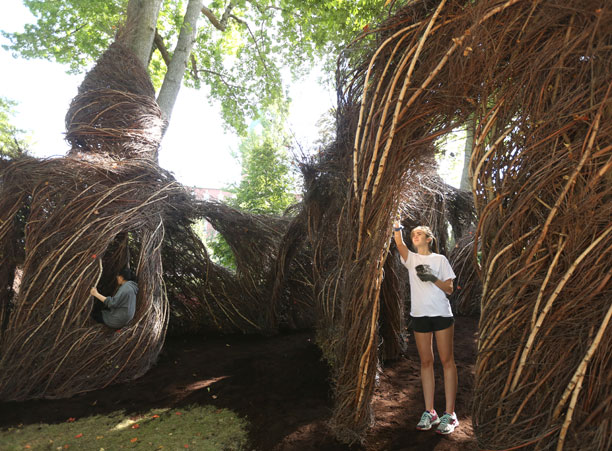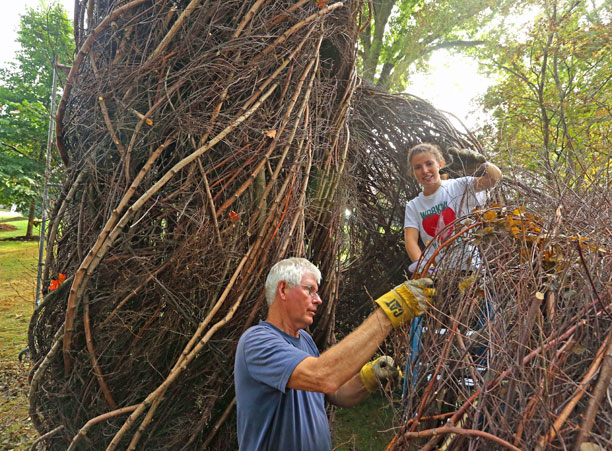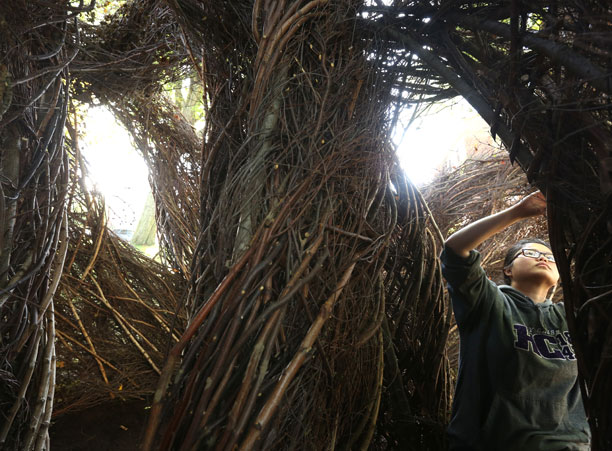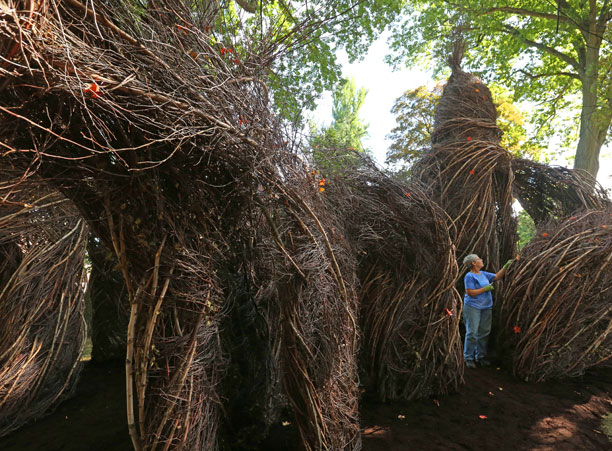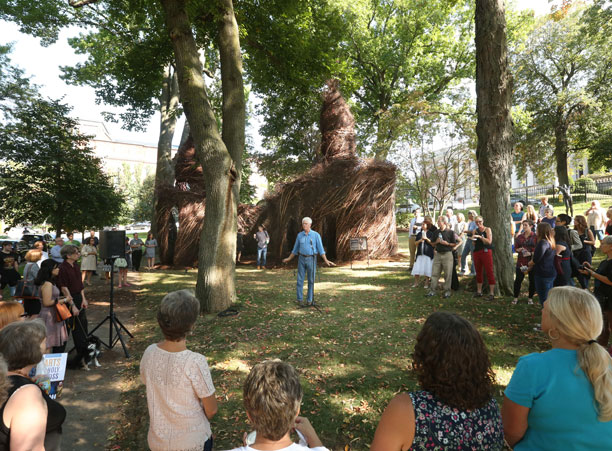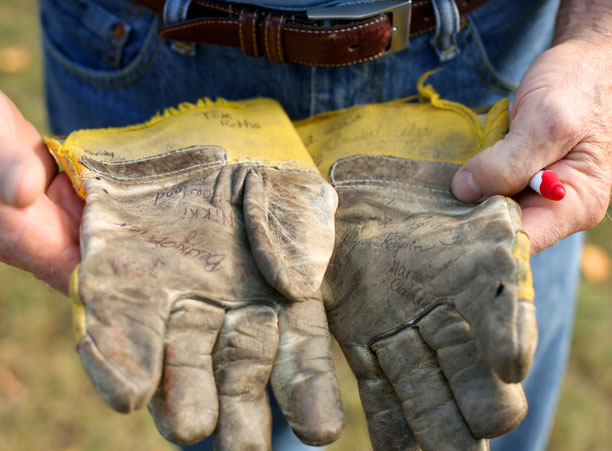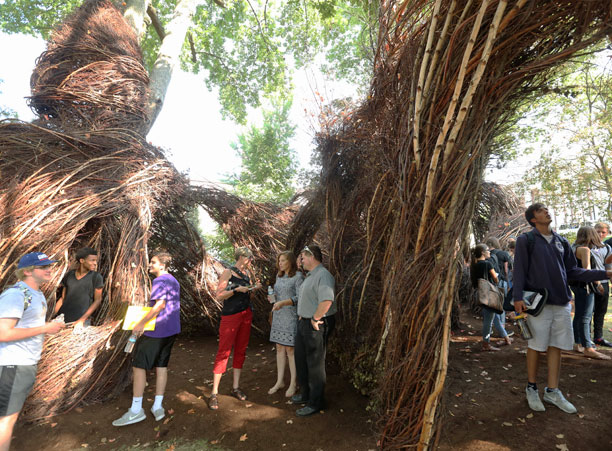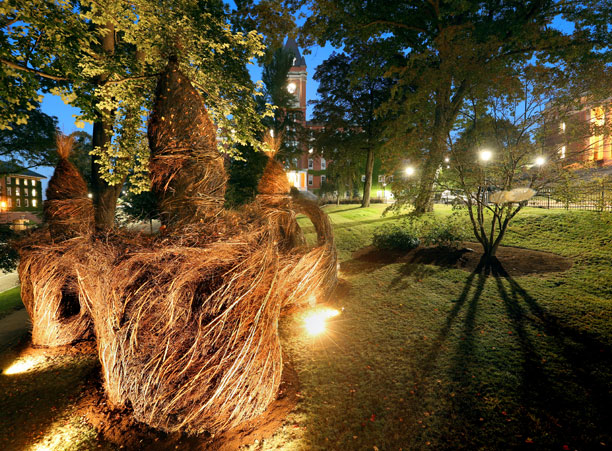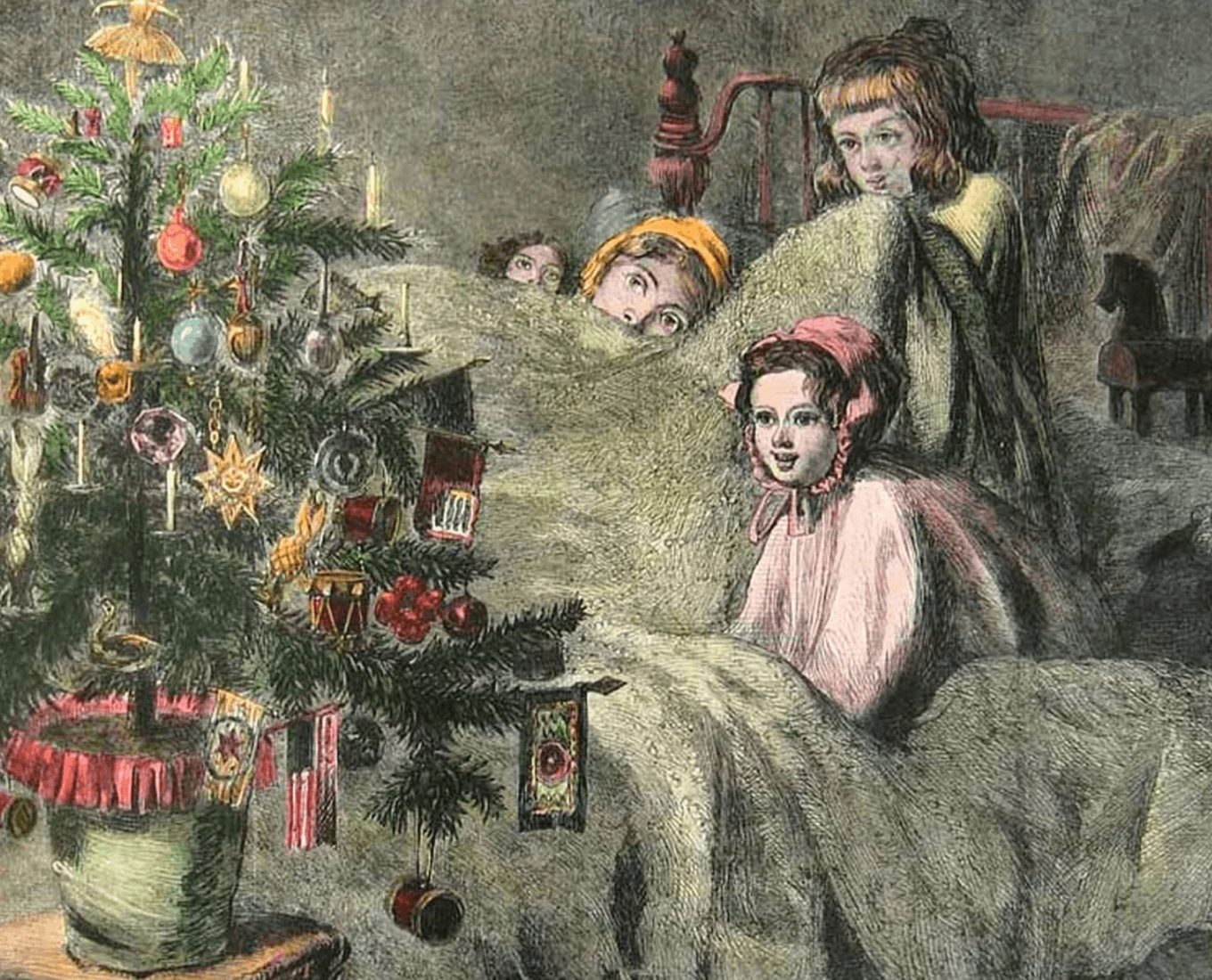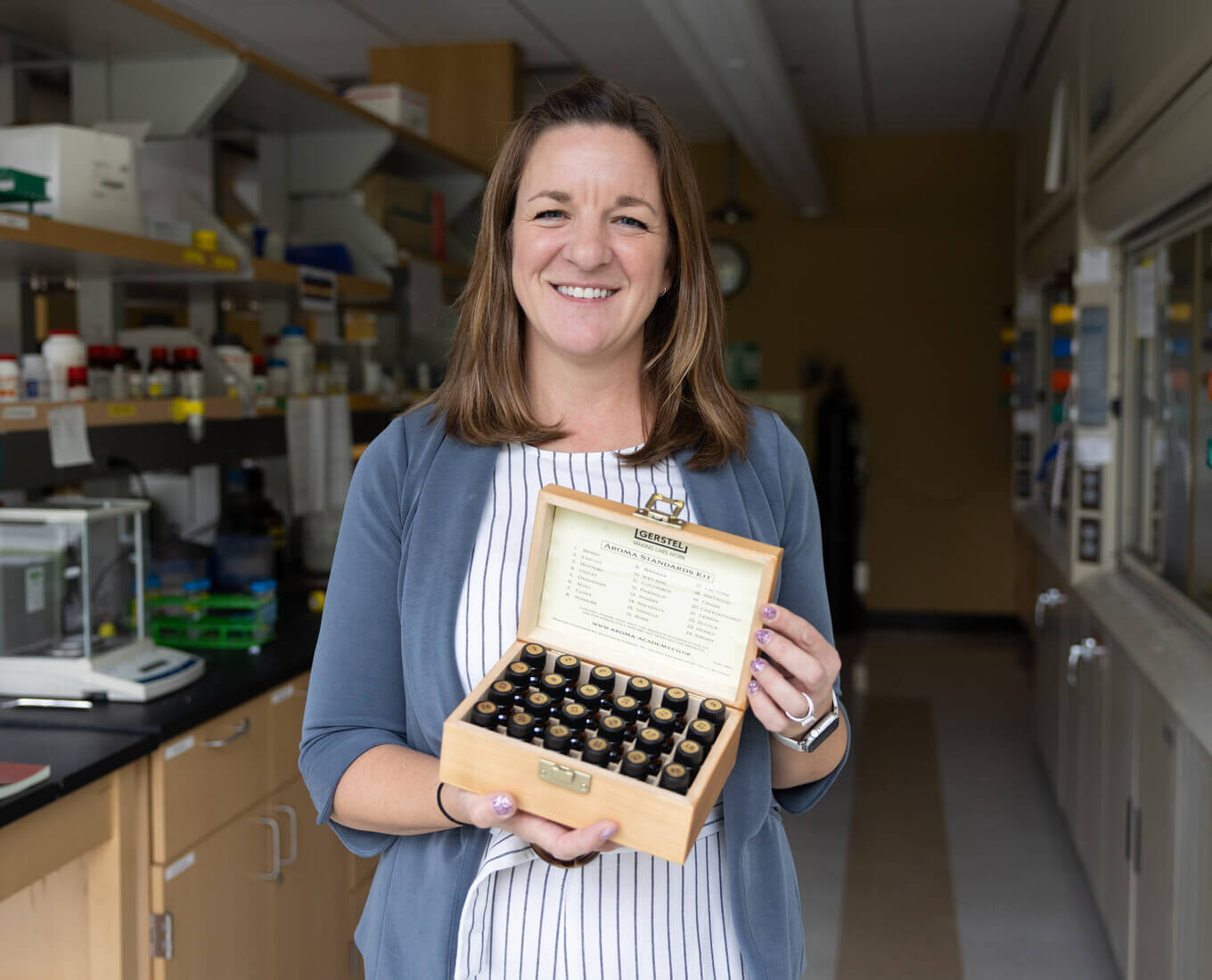
The temporality and whimsy of Patrick Dougherty's Stickwork sculptures have graced more than 250 sites around the world — from the open fields of the Scottish Highlands to the Riniyo-in Temple in Chiba, Japan. This fall, the College of the Holy Cross became home to one of the renowned artist's most recent works, which stands on Linden Lane in playful conversation with the campus' surrounding architecture.
"Just Off the Beaten Track" is made from locally sourced gray birch and Norway maple saplings, which were woven, bent and entwined to form three spirals moving around a center core and rising up into towers reaching 25 feet high.
The sculpture was completed in under three weeks in September as a part of Dougherty's artist-in-residency at the College, hosted by the Arts Transcending Borders (ATB) initiative which is funded by the Andrew W. Mellon Foundation; and cosponsored with the Iris and B. Gerald Cantor Art Gallery, the environmental studies program, and the visual arts department.
During these three weeks, the Holy Cross community was not only given the rare opportunity to observe Dougherty at work, but to participate in the artistic process as well.
Along with Dougherty comes the invitation to work beside him in the creation of his sculptures: more than 300 students, faculty, staff, and members of the Worcester community had a hand in the extensive process.
In a recent article published in the online arts journal New York Arts, and the Berkshire Review for the Arts, Virginia Raguin, professor of visual arts and Distinguished Professor of Humanities, wrote: "Dougherty offers … a gift — the possibility that we become co-creators. Male and female, young and old, accountant or housepainter, we become part of the work. We cut the saplings, haul the wood, strip the leaves, bind the twigs, or climb a scaffold — he allows this work to become ours as well as his."
Here’s a look at the entire process and the impact it’s had on the College community.
The Gathering of Sticks
 Image by Yonca Karakilic
Image by Yonca KarakilicAt the same time, Dougherty was conceptualizing the sculpture, which he explained is not a slavish process for him. During his on-campus artist talk while the sculpture was still being constructed, he shared that he doesn't spend a lot of time researching in advance nor does he come to a project with an unwavering plan; rather the idea develops organically with the site and materials in mind.
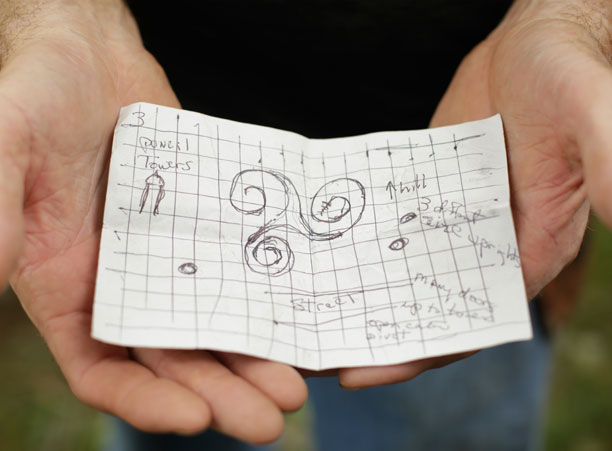 Image by Tom Rettig
Image by Tom RettigEven with the plan decided upon, Dougherty said that he must always remain willing to make adjustments when sleeves are rolled up and construction is underway.
"It's an open process — there's give and take when building," he shared. "You have to allow for space to learn the materials and what can and can't be done."
A Community Engaged
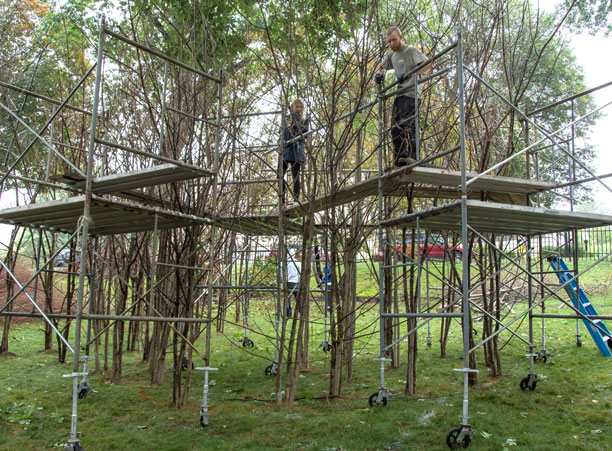 Image by John Cannon
Image by John CannonWhile working with a world-renowned artist on one of his sculptures is a seemingly daunting task, Dougherty's casual and unassuming demeanor abated any concerns volunteers may have had. More often than not, he would set up the volunteers with everything they needed and leave them to work.
This brings up a question commonly asked: "But how do they know what to do?" There's something about sticks, Dougherty says, that people inherently understand.
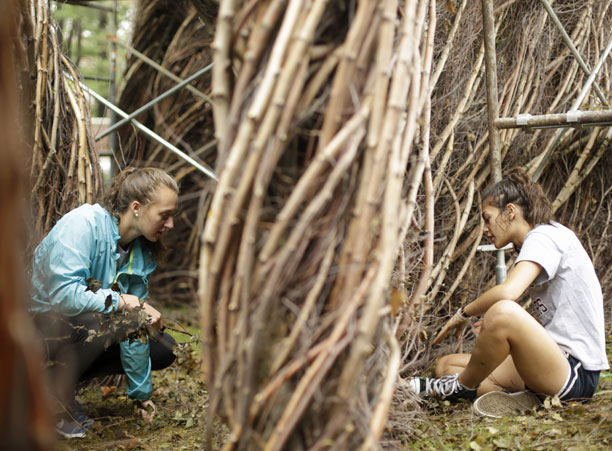 Image by Tom Rettig
Image by Tom RettigWhile of particular interest for students studying the arts, the sculpture also drew interest from students of all class years and disciplines — from first-year Montserrat students to those in biology and environmental science courses — all of whom engaged with the construction in different ways, whether putting on gardening gloves and climbing the scaffolds to build, or spending time observing the process with a notebook and pen.
Students taking "Introduction to Creative Writing: Narrative," taught by Leila Philips, associate professor of English, were among the latter.
 Image by Tom Rettig
Image by Tom RettigWith no background to contextualize what she was seeing, Morano's experience of the sculpture's evolution from sticks to sculpture was something close to a revelation.
"Slowly, the site evolved," she said. "I couldn't believe how scattered tree branches could become something so impressive."
Robert Bertin, professor of biology and Anthony and Renee Marlon Professor in the Sciences, who played a major role in the initial stages of finding and collecting the saplings, saw the inherent value of participating in the creation of this Stickwork.
"I encouraged students to get involved in the work because I see great value not only in the exposure to the artistry of the work, but also as an opportunity to have a close encounter with the natural world, something that has sadly become less frequent in recent years," he explained.
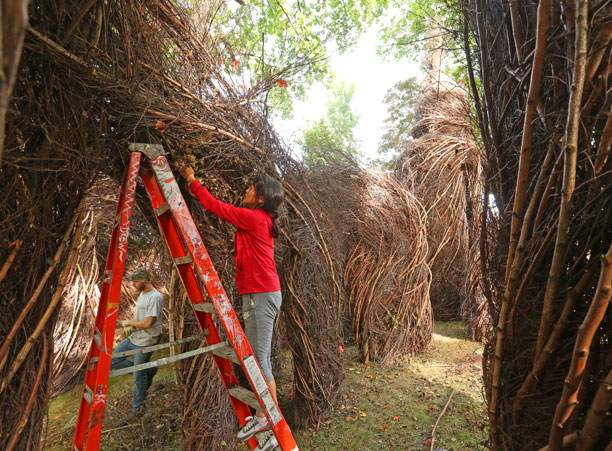 Image by Tom Rettig
Image by Tom Rettig"It was an important experience for me to gain a better understanding of my Montserrat, 'Between Nature and Metropolis,' where we studied sensory experience and how are those senses connected and changed from nature to artificial architecture," said Cheng.
Wide-Reaching Impact
 Image by Virginia Raguin
Image by Virginia RaguinNativity School art, religion, and science teacher Sarah Valente '16 brought a group of her young students, members of the school's Street Art Club, to see the outdoor sculpture in progress.
"The piece exposed students to a new artistic process, the use of recycled materials, temporary art, and how art can work with the environment," shared Valente. "After interacting with the piece, students created line drawings of the piece. The sticks and vines provided them with a range of thicknesses which allowed them to experiment with line."
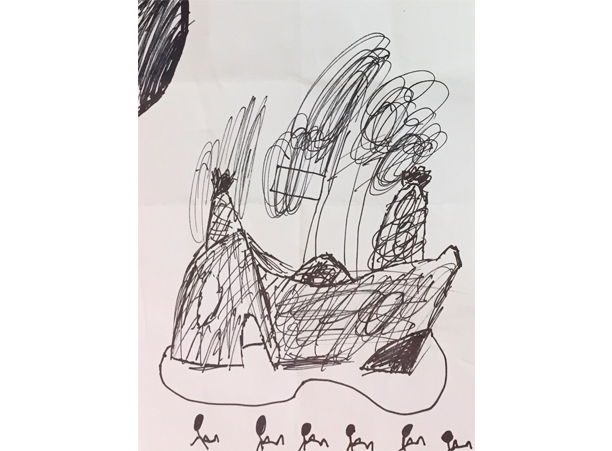
One of the resulting images, created by Nativity School fifth grader Caleb Mancia, is pictured above.
A Lasting Mark
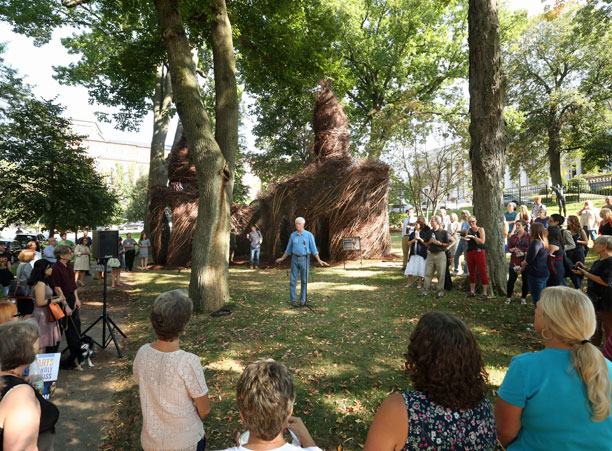 Image by Tom Rettig
Image by Tom Rettig"There's a lot of work that goes into this that people just walking by probably aren't aware of," Adrian Cole '20 told Worcester Living in a recent article (PDF). "It kind of gives me a sense of gratification knowing that I put in the time and the effort and there's a sense of ownership, not just for me personally but for the community as a whole. We all put something into it and made this entire huge sculpture, which is beautiful."
While the sculpture is not permanent, nor meant to be, and will fade with weather and time, it's coalescence with the community is its greatest quality.
"It is a little bit sad," Dougherty said during his talk regarding his structures coming down, "but one of the things is that sculpture is about ideas and ideas are embedded in sculptures. And in one way, a community uses that sculpture up."
 Image by Evangelia Stefanakos
Image by Evangelia StefanakosThe process of building, and now the process of living alongside the sculpture — passing it on the way to Dinand Library or to class in Stein Hall — has allowed for interaction that transcends traditional disciplinary boundaries, and remains a lasting marker of a community's efforts.
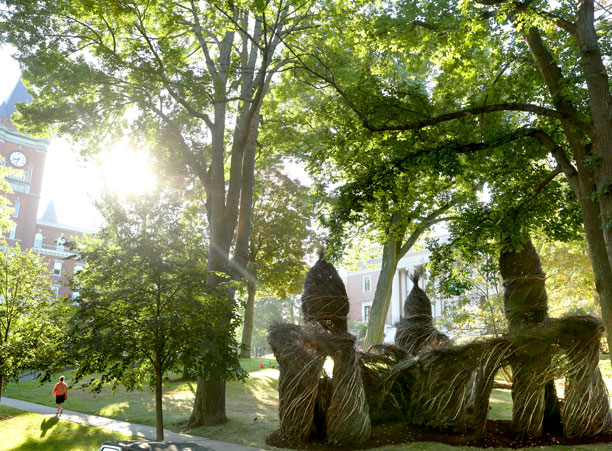 Image by Tom Rettig
Image by Tom Rettig